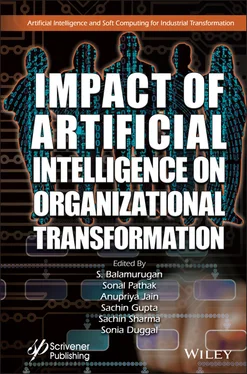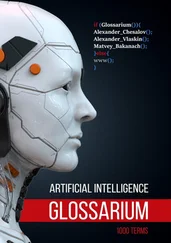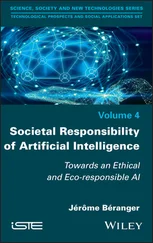Impact of Artificial Intelligence on Organizational Transformation
Здесь есть возможность читать онлайн «Impact of Artificial Intelligence on Organizational Transformation» — ознакомительный отрывок электронной книги совершенно бесплатно, а после прочтения отрывка купить полную версию. В некоторых случаях можно слушать аудио, скачать через торрент в формате fb2 и присутствует краткое содержание. Жанр: unrecognised, на английском языке. Описание произведения, (предисловие) а так же отзывы посетителей доступны на портале библиотеки ЛибКат.
- Название:Impact of Artificial Intelligence on Organizational Transformation
- Автор:
- Жанр:
- Год:неизвестен
- ISBN:нет данных
- Рейтинг книги:3 / 5. Голосов: 1
-
Избранное:Добавить в избранное
- Отзывы:
-
Ваша оценка:
- 60
- 1
- 2
- 3
- 4
- 5
Impact of Artificial Intelligence on Organizational Transformation: краткое содержание, описание и аннотация
Предлагаем к чтению аннотацию, описание, краткое содержание или предисловие (зависит от того, что написал сам автор книги «Impact of Artificial Intelligence on Organizational Transformation»). Если вы не нашли необходимую информацию о книге — напишите в комментариях, мы постараемся отыскать её.
Discusses the impact of AI on organizational transformation which is a mix of computational techniques and management practices, with in-depth analysis about the role of automation & data management, and strategic management in relation to human capital, procurement & production, finance, and marketing.
Audience
Impact of Artificial Intelligence on Organizational Transformation — читать онлайн ознакомительный отрывок
Ниже представлен текст книги, разбитый по страницам. Система сохранения места последней прочитанной страницы, позволяет с удобством читать онлайн бесплатно книгу «Impact of Artificial Intelligence on Organizational Transformation», без необходимости каждый раз заново искать на чём Вы остановились. Поставьте закладку, и сможете в любой момент перейти на страницу, на которой закончили чтение.
Интервал:
Закладка:
7 7. Strict Regulation of Brokers: Brokers were very strictly monitored by the regulatory authority SEBI [11]. Regular audits were conducted by SEBI to see that all norms were followed by the broking firms and also the companies. SEBI also issued regular guidelines for the brokers laying out very clearly the process to be followed by the brokers for client registration and executing their trades and also communication with them. These norms were also updated from time to time if technology or economy changed.
8 8. Investor Protection: [12] determined that norms for investor protection lead to investor confidence and thus helped in boosting investor morale and increase in their participation. Participation over a period of time happened in two ways: direct and indirect mode. Directly was when investors participated in buying and selling from your own account and indirectly was when they invested in mutual funds and other such instruments. Investor protection was taken very seriously by regulators and new act was passed with strict adherence norms to be followed by each and every broker and intermediary.
9 9. Operators/Punters: Though the online system of stock trading is totally nameless, but still there were ways in which stocks could be maneuvered to an extent with lot of money and connections. Operators driven scripts are the type of scripts which are controlled by the people who maneuver the stock price according to their will. These stocks could be found even in the index companies. This was one of the hind sides of this system. It was believed that when stocks do not follow the fundamental analysis, it might be moved by an operator.
2.5 Generation 3: Algo Trading
Today is the age of AI which has made its way in every aspect of our lives whether shopping or investing. So, stock markets globally are no different. AI has taken over all the aspects of trading in stock broking and investment including surveillance, monitoring, compliance, and controlling price and volume of stocks. AI has been a major tool to predict trends and also in managing investment portfolios and selecting good return generating stocks. While large companies have been making use of AI for years to mine huge amounts of data together with not only stock performance but also corporate commentary, social media trends, consumer behavior, credit card trends, etc., the advent and rise of AI-based technology have set international stock markets in a new age.
Until recent times, stock market data and price movements were analyzed via quantitative analysis was but it was time-consuming and only a few could do it and extract meaningful information, so it was used only by a few major players like Goldman Sachs and J.P Morgan, which managed nearly 20% of its portfolios with AI. Now that AI is nearly everywhere and the barriers to entry have decreased, small-time brokers and startups have started looking to leverage this tech into building a new model for investors to pick stocks.
Let us create an understanding as to what exactly is AI and how it is being used in trading and analyzing stocks, and some controversy surrounding AI’s mass acceptance.
2.6 Artificial Intelligence
The simplest definition of AI was given by famous professor McCarthy (1950), dating back to the 1950s by Dartmouth professor Joseph McCarthy, which is a process of using software to mimic aspects of learning and decision-making so that a machine can be made to simulate it. Since the starting of AI, its applications have modified and process has scaled to accommodate growing technology. At present, modern world has stuck to the concept, AI is being used nearly everywhere:
Google’s Map application uses AI to predict traffic patterns to offer the quickest route and also tells about the precise amount of traffic and congestion one would find after an hour or two on any required route.
Online shopping at retailers like Amazon use AI to make price changes and product recommendations to meet customer’s demands.
Uber and Lyft use AI to determine fair pricing based on peak usage.
Banks use AI as part of their fraud protection and prevent identity theft.
Credit card companies use AI to determine whether a customer is eligible for a credit increase.
Every flight in the world uses AI-powered autopilot to steer the vehicle (humans only account for ~7 minutes of control, reserved for take-offs and landings).
Spam filters on your email sort out behavior patterns of junk mail and scammer tactics.
Plagiarism checks in professional and academic settings can quickly analyze papers for stolen or redundant content.
The list goes on. So, if you think that AI is something new and has come up in recent years, then it is important that you know that it is an old concept which was there for many decades though not in the same shape as it has evolved over years. Aspects of AI have been refined in recent years which have made it smarter to the current status, with machine learning and deep learning being popular buzzwords.
Machine Learning means training a machine to perform a particular action by programming algorithms set by a programmer. This includes things like recognizing a particular any patter of expenditure made by a person by her credit card and then indentifying any inconsistency to trace fraud. As more algorithms are added and data accumulated, the AI becomes more precise and capable of processing data to make better-informed decisions.
Deep Learning , which is almost like machine learning, is a process of training a machine to perform actions and become more precise over time. However, deep learning goes further, involving an approach that involves artificial neural networks—similar to how human brains learn patterns of behavior (for example, someone falls and you automatically extend your hand to help without any conscious thought). With researchers making new breakthrough in this concept every year, deep learning becomes a type of responsive intelligence that learns as it goes. Usually, deep learning enhances machine learning by being able to adapt to new data by itself, changing algorithms to create more favorable output. Of course, this requires considerable amounts of computing power and it has not been until recent years where humans have closed the gap to creating amore sophisticated and developed form of AI.
2.7 AI Stock Trading
So, let us make an effort to understand how does AI apply to the stock markets and stock trading? For a technology which specializes into number crunching and analyze that data to predict the future, AI is a natural fit for the world of finance. In stock market every day, a lot of data is generated regarding lows, highs, volume of trade, etc., which is used by the analysts to predict the future movements of stocks. A combination of deep learning along with machine learning allows financial firms to analyze not only stock price fluctuations but also unstructured data that reveals patterns of behavior that may have not been perceptible by a human [13]. This paves way for a new level of accuracy in trading decisions that goes beyond traditional investing strategies. Of course, these are just some of the known usages of AI. Stock markets around the world have realized the application of AI and begun to shift their focus toward bringing in AI experts from Information Technology sector to the world of hard core finance and investment. This competitive uproar has led to companies to move forward and apply this technology in relation to real-world investing applications.
2.8 Algorithmic (Algo Trading) Trading
Algorithmic Trading or Algo Trading refers to triggering trades on stock exchanges based on predefined criteria and without any human interference using computer programs and software [14]. Algorithmic Trading is normally defined as the use of computer algorithms to mechanically make certain orders, trading decisions, and manage those orders after compliance. While being a division of algorithmic trading, high-frequency trading involves buying and selling oodles of shares in a very small period of time like fractions of seconds. After so many frauds and downturns in stock market, the common agreement is that algorithmic trading is an unavoidable evolution of the trading process and markets all over the world have implemented various measures to provide a unhampered experience to investors. In the United States and other such developed stock markets, High-Frequency Algorithmic trading accounts for about 70% of trades in equities segment. In India, this percentage of trades done with the help of algorithmic trading to the total turnover has moved up to as much as 49.8%.
Читать дальшеИнтервал:
Закладка:
Похожие книги на «Impact of Artificial Intelligence on Organizational Transformation»
Представляем Вашему вниманию похожие книги на «Impact of Artificial Intelligence on Organizational Transformation» списком для выбора. Мы отобрали схожую по названию и смыслу литературу в надежде предоставить читателям больше вариантов отыскать новые, интересные, ещё непрочитанные произведения.
Обсуждение, отзывы о книге «Impact of Artificial Intelligence on Organizational Transformation» и просто собственные мнения читателей. Оставьте ваши комментарии, напишите, что Вы думаете о произведении, его смысле или главных героях. Укажите что конкретно понравилось, а что нет, и почему Вы так считаете.












